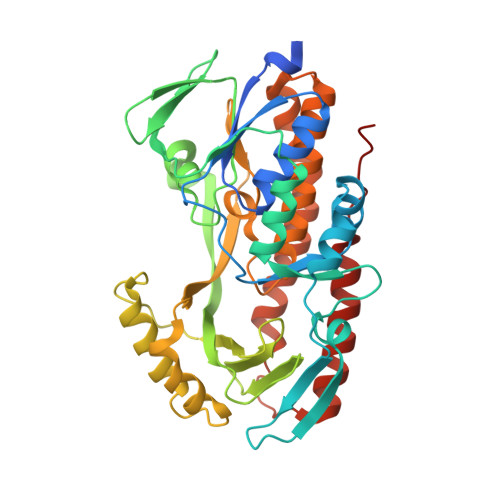Plasticity, dynamics, and inhibition of emerging tetracycline resistance enzymes.
Park, J., Gasparrini, A.J., Reck, M.R., Symister, C.T., Elliott, J.L., Vogel, J.P., Wencewicz, T.A., Dantas, G., Tolia, N.H.(2017) Nat Chem Biol 13: 730-736
- PubMed: 28481346
- DOI: https://doi.org/10.1038/nchembio.2376
- Primary Citation of Related Structures:
5TUE, 5TUF, 5TUI, 5TUK, 5TUL, 5TUM - PubMed Abstract:
Although tetracyclines are an important class of antibiotics for use in agriculture and the clinic, their efficacy is threatened by increasing resistance. Resistance to tetracyclines can occur through efflux, ribosomal protection, or enzymatic inactivation. Surprisingly, tetracycline enzymatic inactivation has remained largely unexplored, despite providing the distinct advantage of antibiotic clearance. The tetracycline destructases are a recently discovered family of tetracycline-inactivating flavoenzymes from pathogens and soil metagenomes that have a high potential for broad dissemination. Here, we show that tetracycline destructases accommodate tetracycline-class antibiotics in diverse and novel orientations for catalysis, and antibiotic binding drives unprecedented structural dynamics facilitating tetracycline inactivation. We identify a key inhibitor binding mode that locks the flavin adenine dinucleotide cofactor in an inactive state, functionally rescuing tetracycline activity. Our results reveal the potential of a new tetracycline and tetracycline destructase inhibitor combination therapy strategy to overcome resistance by enzymatic inactivation and restore the use of an important class of antibiotics.
Organizational Affiliation:
Department of Molecular Microbiology, Washington University School of Medicine, St. Louis, Missouri, USA.

















